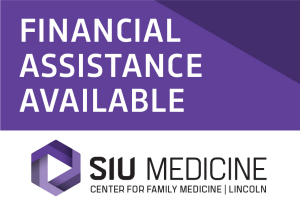U.S. banks' Q3 profits set to shrink on economic risks, deal slump
 Send a link to a friend
Send a link to a friend
 [October 07, 2022] By
Saeed Azhar and Niket Nishant [October 07, 2022] By
Saeed Azhar and Niket Nishant
NEW YORK (Reuters) - The biggest U.S. banks
are expected to report weaker third-quarter profits as the economy
slowed and volatile markets put the brakes on dealmaking.
Four of the nation's largest lenders -- JPMorgan Chase & Co, Wells
Fargo, Citigroup Inc and Morgan Stanley -- will report third-quarter
earnings Friday, Oct. 14.
The results are expected to show a slide in net income after turbulent
markets choked off investment-banking activity and lenders set aside
more rainy-day funds to cover losses from borrowers who fall behind on
their payments.
Banks typically earn more when interest rates rise because they can
charge customers more to borrow. But their fortunes are also tied to the
health of the broader economy.
The Federal Reserve has raised benchmark rate from near zero in March to
the current range of 3.00% to 3.25% and signalled more increases. While
rising rates tend to buoy bank profits, the broader risk of an economic
downturn sparked by high inflation, supply-chain bottlenecks and the war
in Ukraine could weigh on future earnings. While higher rates are
expected to boost net interest income at the two largest U.S. banks,
JPMorgan and Bank of America, the jump in borrowing costs has also hurt
their mortgage and auto-lending businesses by cooling demand.

"The concern is that rates will rise too much and slow the economy or
push it into a recession," said Matt O'Connor, an analyst at Deutsche
Bank, wrote in a research note.
Analysts expect profits at JPMorgan to drop 24%, while net income at
Citigroup and Wells Fargo are forecast to decline 32% and 17%,
respectively, according to Refinitiv I/B/E/S data.
Investment-banking powerhouse Goldman Sachs Group Inc is expected to
report a 46% plunge in profits when it reports on Oct. 18, while
earnings at rival Morgan Stanley are seen falling 28%. The drop comes as
corporations' interest in mergers, acquisitions and initial public
offerings dried up.
Analysts expect Bank of America's third-quarter profit to fall nearly
14%, with robust growth at its consumer division estimated to partially
offset the decline in advisory fees.
The S&P 500 bank index is down almost 26% this year. Shares of Goldman
Sachs and Morgan Stanley, which are not part of the index, are down 20%
and 17% respectively during the same period.
[to top of second column] |

Wells Fargo Bank branch is seen in New
York City, U.S., March 17, 2020. REUTERS/Jeenah Moon

STEEP FALL
JPMorgan President Daniel Pinto told investors last month that he
expected the bank's investment banking fees to fall between 45% to
50% in the third-quarter.
For some investment-banking businesses, weakness was exacerbated by
a decline in large private-equity buyouts. Dealmaking in that market
dropped 54% to $716.62 billion in the third quarter from the same
period last year, according to Dealogic data.
U.S. banks wrote down $1 billion on leveraged and bridge loans as
rising interest rates made it tougher for them to offload high-risk
debt onto investors and other lenders.
"We are expecting further losses on these deals," said Richard
Ramsden, an analyst at Goldman Sachs who oversees research on large
banks. "It's going to vary quite a bit," depending on where the
transactions were initially priced and how much exposure remains, he
said.
Wall Street banks took combined losses of $700 million on the sale
of $8.55 billion in loans and bonds backing the leveraged buyout of
business software company Citrix Systems Inc, Reuters reported last
month, citing a person familiar with the matter.
Analysts also said banks will set aside more reserves in
anticipation of more soured loans.
"We expect moderate, yet increasing, negative impact on banks' asset
quality and loan growth stemming from the higher rates, inflation
and a mild recession in the U.S., negating some of the benefits of
higher rates," analysts at Fitch Ratings wrote in a report.
The ratings agency expects overall bank loans to grow 10% to 11%
this year, but that could peter out as interest rates climb and the
economy slows.
"Banks are going to be facing a much different 2023 than they did in
2022," said Christopher Wolfe, who oversees Fitch's ratings and
analysis of U.S. and Canadian banks.
(Reporting by Saeed Azhar in New York and Niket Nishant in Bengaluru;
Editing by Lananh Nguyen and Nick Zieminski)
[© 2022 Thomson Reuters. All rights
reserved.]
This material may not be published,
broadcast, rewritten or redistributed.
Thompson Reuters is solely responsible for this content.
 |